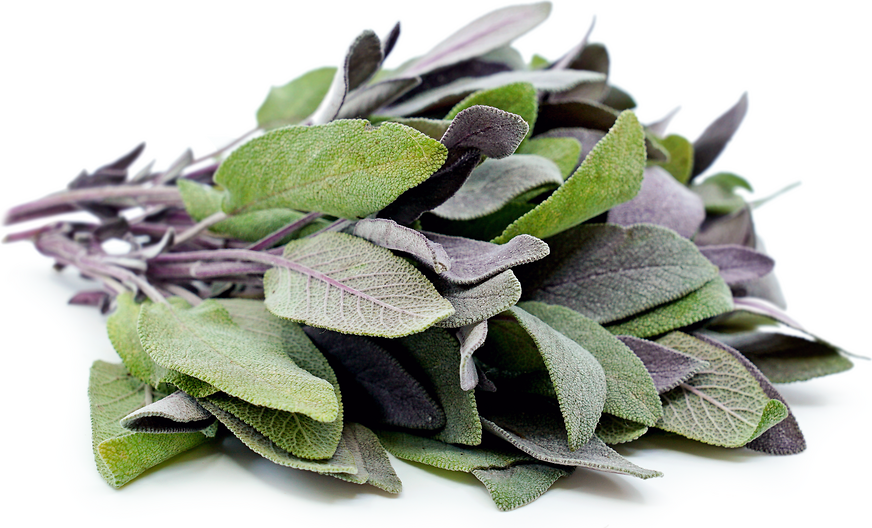


Purple Sage
Estimated Inventory, bunch : 0
Description/Taste
Purple sage is a hardy aromatic shrub with oblong leaves ranging 3-6 centimeters in length. The young leaves are a smoky purple gradually turning green-gray with a soft, pebbly texture when they mature. The vibrant purple stems are woody at the base, but soft and tender at the tips. During the early summer months, small two-lipped flowers bloom in whorls on top of short stems. Purple sage offers the same complex aroma and flavor as common sage, a taste reminiscent of rosemary and pine with a bit of citrus.
Seasons/Availability
Purple sage is available year-round.
Current Facts
Purple sage is a uniquely colored cousin of common sage, botanically classified as Salvia officinalis ‘Purpurea’. A member of the mint family, Purple sage has leaves that are packed with highly aromatic volatile oils lending it to both culinary and medicinal applications.
Nutritional Value
Fresh Purple sage leaves contain large amounts of vitamins A and C. The volatile oils in Purple sage contain compounds like camphor and pinene, which are responsible for the plant’s aroma. These same compounds are beneficial to the digestive system and have astringent, diuretic and anti-septic properties, among others. Studies have shown sage to have estrogenic biochemicals which can help alleviate symptoms of menopause.
Applications
Purple sage can be used in place of common garden sage or when an added pop of color is desired. As with other varieties of sage, the herb is not suited for raw applications. Purple sage develops optimal flavor when cooked in fat such as butter, olive oil, or bacon. Pan fry fresh Purple sage leaves until crispy for a uniquely colored garnish for quiches, pastas, risotto or other dishes. Purple sage can be used in traditional recipes calling for sage, like homemade sausage, poultry and pork dishes, and soups and stews. Purple sage adds a savory flavor to butter and cheese spreads. To preserve Purple sage, chop leaves and freeze in ice cube trays with oil. The colorful herb can be air-dried, upside-down on hanging racks; the flavor may intensify, and can be somewhat different than that of fresh leaves. Fresh leaves can be stored in a plastic bag in the crisper drawer of the refrigerator for up to one week.
Ethnic/Cultural Info
Native Americans considered sage a natural ‘cure all’ and mixed fresh leaves with bear fat for an all-purpose salve. It was Charlemagne in the 8th and 9th centuries that first began commercially cultivating sage in the gardens of monasteries. During the Medieval period, sage was one of the “Four Thieves” vinegar blend used against the plague.
Geography/History
Sage is native to the Mediterranean region, and is often found growing on sloped hills. It is both wild and cultivated, as it has been for centuries. The genus name Salvia is from the Latin ‘salvare,’ meaning “to heal” or “to save.” Since ancient times, sage has been considered valuable. In the 17th century, Chinese merchants would trade three or 4 baskets of tea for just one basket of sage. The semi-evergreen Purple sage is most often listed botanically as Salvia officinalis ‘Purpurea’, but can sometimes be listed as ‘Purpurascens’. The botanist and taxonomist cited for classifying Purple sage was Dr. Jose Cuatrecasas, a pioneer in botany during the early 20th century. He dedicated much of his life to exploring, identifying, and cataloging members of the flowering Asteraceae family in the Andean mountains of South America. Purple sage is hardy, though not as frost resistant as the common, green garden sage. The purple-hued herb can be found growing in most climates where temperatures do not dip below freezing.
Recipe Ideas
Recipes that include Purple Sage. One
| Soilborn |
|
Purple Sage Butter Summer Squash with Chives |
| Homesick Texan |
|
Purple Sage and Colorful Cauliflower |




